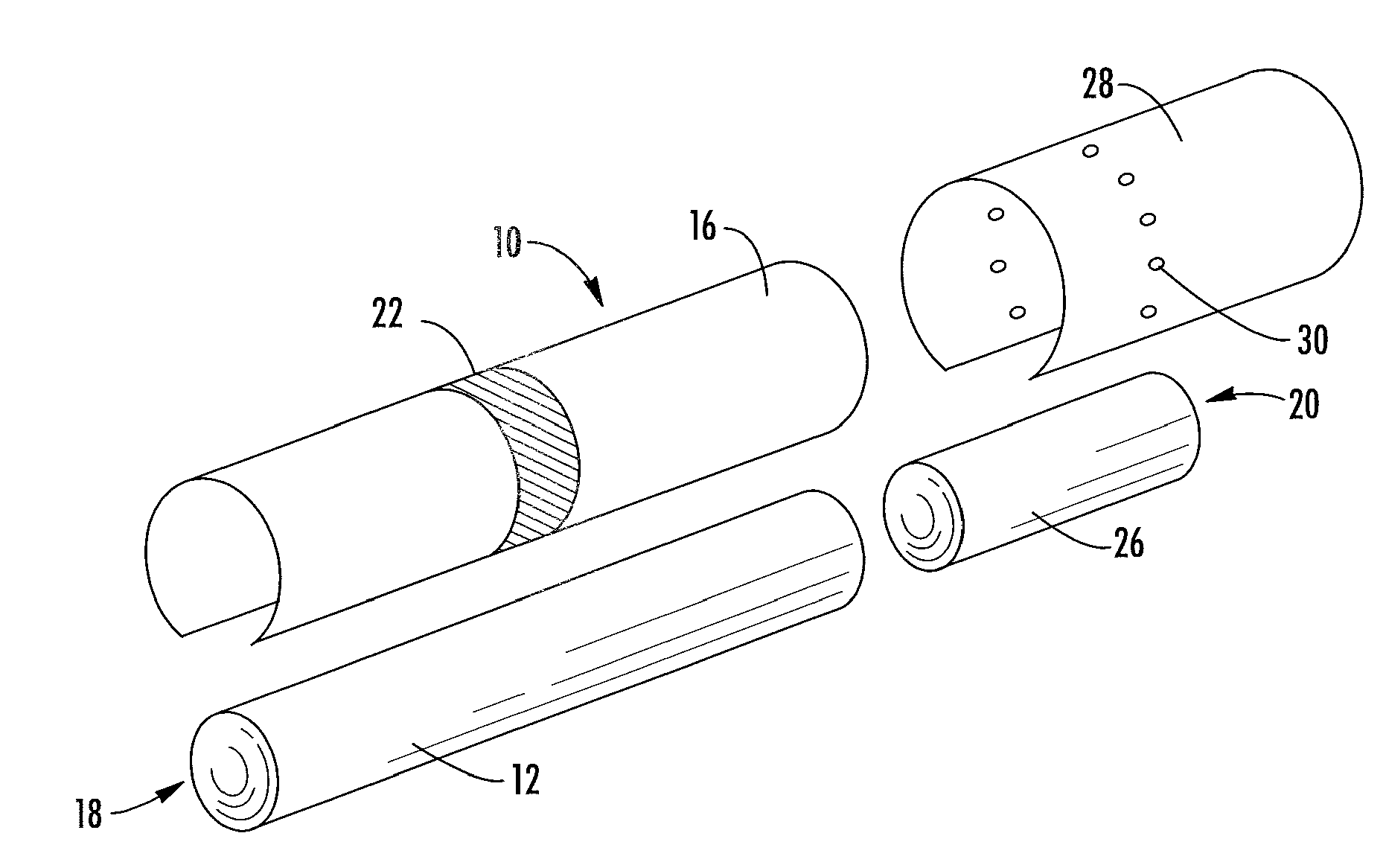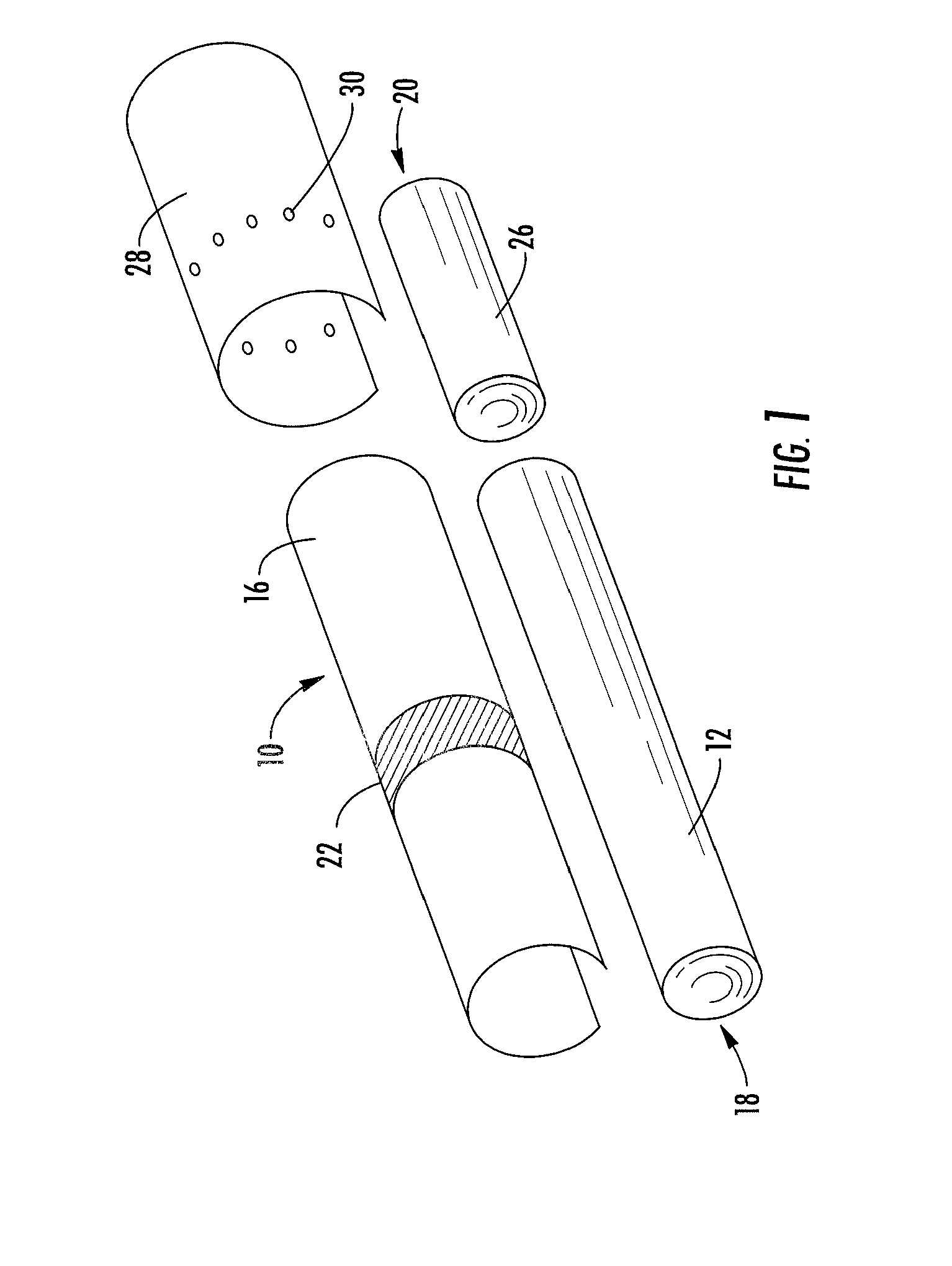Modification of bacterial profile of tobacco
a technology of tobacco and bacterial profile, which is applied in the field of tobacco bacterial profile modification, can solve the problems of increasing the i>lactobacillus/i>bacterial content associated with reducing the total bacterial content of the tobacco plant or material, etc., and achieves the effect of reducing the tsna content of the tobacco material
- Summary
- Abstract
- Description
- Claims
- Application Information
AI Technical Summary
Benefits of technology
Problems solved by technology
Method used
Image
Examples
example 1
[0100]Dark-air cured tobacco is treated five hours prior to harvest with one or more of a probiotic bacteria solution, and enzyme solution, and / or a 3% sodium chloride salt solution. The solution is applied using a backpack sprayer. Solutions are based on a 100 gallon solution per acre, using recommended plant spacings and dose per plant is provided below.
[0101]The treated tobacco is harvested and mid-stalk leaf samples are analyzed for total bacteria counts, enteric bacteria counts, and Lactobacillus counts. Ten grams of each treated tobacco sample is placed in Butterfields Phosphate Buffer and diluted 10−2 to 10−8 times with water. The treated tobacco sample dilutions are applied to plate count agar (PCA) for total aerobic bacteria counts, to violet red bile agar (VRBA) for gram negative bacteria counts, and to MRS for anaerobic (Lactobacillus) counts. The number of bacterial colonies, as visualized under magnification, are counted to estimate the total number of colony-forming un...
example 2
[0112]A first, 0.5 acre unplanted plot of soil was treated with a nitrogen-containing fertilizer comprising urea (N—P—K: 46-0-0) at a rate of 150 pounds per acre and a fertilizer incorporating diammonium phosphate and phosphorus (N—P—K: 18-46-0) at a rate of 180 pounds per acre by broadcast application. The following day, a potassium sulfate fertilizer (N—P—K: 0-0-50) was broadcast applied at 180 pounds per acre. All fertilizer applications were incorporated into the soil after application.
[0113]A second, 0.5 acre unplanted plot of soil was treated with a nitrogen-containing fertilizer comprising urea (N—P—K: 46-0-0) at a rate of 150 pounds per acre and a fertilizer incorporating diammonium phosphate and phosphorus (N—P—K: 18-46-0) at a rate of 180 pounds per acre by broadcast application. The following day, a potassium chloride fertilizer (N—P—K: 0-0-60) was broadcast applied at 180 pounds per acre. All fertilizer applications were incorporated into the soil after application.
[0114...
PUM
 Login to View More
Login to View More Abstract
Description
Claims
Application Information
 Login to View More
Login to View More - R&D
- Intellectual Property
- Life Sciences
- Materials
- Tech Scout
- Unparalleled Data Quality
- Higher Quality Content
- 60% Fewer Hallucinations
Browse by: Latest US Patents, China's latest patents, Technical Efficacy Thesaurus, Application Domain, Technology Topic, Popular Technical Reports.
© 2025 PatSnap. All rights reserved.Legal|Privacy policy|Modern Slavery Act Transparency Statement|Sitemap|About US| Contact US: help@patsnap.com



